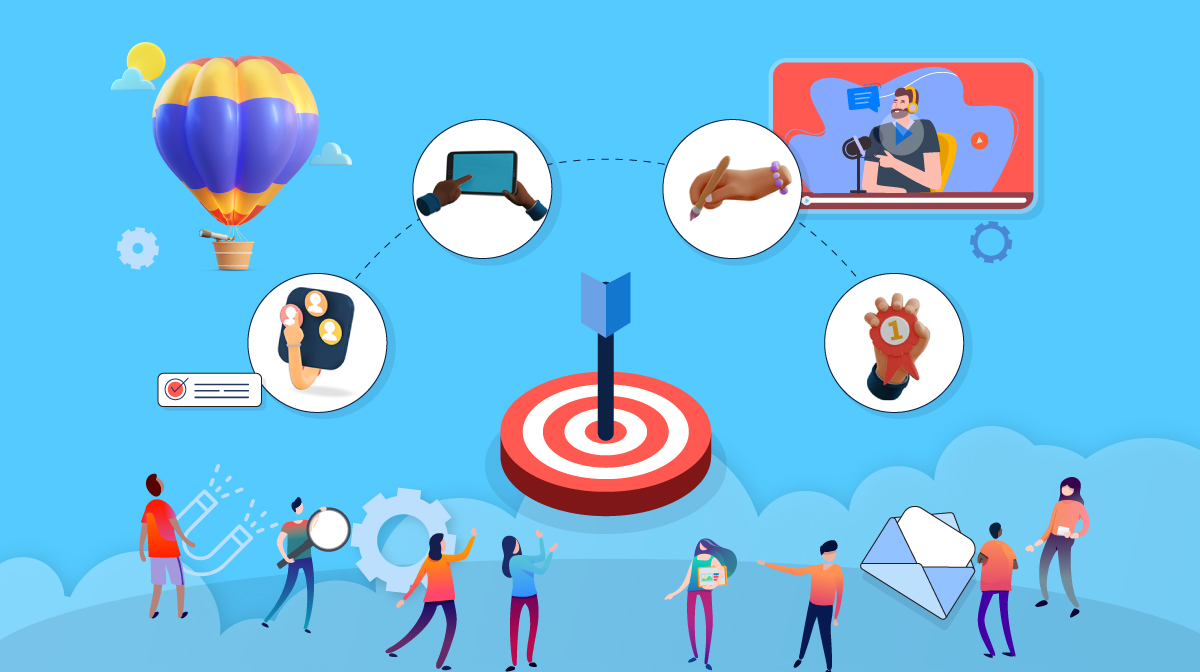
Lead Generation Process for Starters
Are you a new business owner or know someone who is and needs some help getting started? If 'yes', then this guide 'Lead Generation for Starters, is just what you need!
Lead Generation & the Buying Process: Understanding Buyer Behavior
The modern consumer is engaged in a complex buying process that makes it extremely difficult to reach and connect with them.
As stated by Smarinsights, there are six stages of a customer’s buying process:
- Awareness: They notice that you offer something that could help
- Interest: They decide to find out a little bit more about it
- Evaluation: They analyze if you are credible or not
- Trial: They find out what it would be like to buy from you
- Adoption: They turn into a customer
- Loyalty: They keep buying, buy more, and/or tell others about you.
According to the Corporate Executive Board, 80% of buying decisions are made at the "awareness" stage.
The way our society has evolved, more and more people rely on their "inner circle" or a second opinion/review about a product or service before making a purchasing decision.
This means that marketers now need to work hard just to be visible.

What is Lead?
A lead is a person who has shown interest in your product or service. You can't just say that this person is truly interested in the offer without any proof - there are many people out there who will give their email address to anybody promising something for free, but they might not be truly interested.
What's even more important than asking for someone's contact information? Get as much additional information about your leads as you can!
The more you know about them, the easier it gets to target them effectively, and you'll be able to spend less time on unqualified leads that aren't worth your time and effort.
Types of Leads
There are two types of leads:
1) Qualified Leads
2) Sales Leads
A Qualified Lead is a lead that has been scored based on their engagement with your brand and their likelihood to buy. For example, you can score leads who have visited your website or filled out a form on your website as being "qualified."
A Sales Lead is a lead that has been passed along to sales because they have met the specific criteria set by your company (e.g., they live in a certain area, they are within the right age range, etc.). Sales then reach out to these leads to see if they are interested in your product or service.
So how do you generate leads?
Now that you understand what a lead is and the different types of leads let's take a look at some methods you can use to generate leads.
1) SEO

People are increasingly turning to the internet for their information needs, which is why search engine optimization (SEO) is so important. By optimizing your website and content for certain keywords, you can attract people who are already interested in what you have to offer.
2) Social Media Marketing
According to Oberlo, as of 2021, there were 3.78 billion active social media users worldwide.
This means that there are a lot of potential customers using various social media platforms to find information about products and services. By creating engaging content and using targeted ads, you can reach these potential customers and generate leads.
3) Email Marketing
Email marketing is still a powerful tool for generating leads. By creating compelling content and using lead magnets (e.g., free e-books, white papers, etc.), you can entice people to provide their contact information in exchange for the valuable content you've created.
4) Paid Ads
While paid ads can be expensive, they can also be very effective in reaching potential customers who are already interested in what you have to offer. By targeting your ads toward specific demographics or interests, you can ensure that your advertising dollars are spent well!
Lead Generation Tools:
Here are some helpful tools that will help save time when generating leads:
-
Market Samurai
Market Samurai is a great tool that can help you figure out what keywords and content your target audience is searching for and how much money those keywords and phrases are worth.
-
SEMRush
SEMRush allows you to spy on your competitor's best-performing ads as well as their most profitable keywords.
-
SEOQuake
SEOQuake helps make sure that your site is ready for Google's new algorithm changes.
-
Hibu's Convergence Keyword Finder
Hibu's convergence keyword finder helps identify influencers in your niche who would be good connections to engage with.
-
LinkedIn
There are many ways to find hot leads and a great way to start is by utilizing LinkedIn. LinkedIn has become one of the most powerful platforms for lead generation in recent years.
Here are some facts about LinkedIn:
- LinkedIn is the #1 social media platform for business-to-business (B2B) leads
- LinkedIn has over 500 million users, making it the largest social media platform in the world
- LinkedIn is used by 94% of B2B marketers as a source of social media leads
As you can see, there is not a shortage of ways for marketers to generate highly qualified leads! Just remember to always be creative with your marketing efforts and continue testing different strategies until you find something that works for you.
